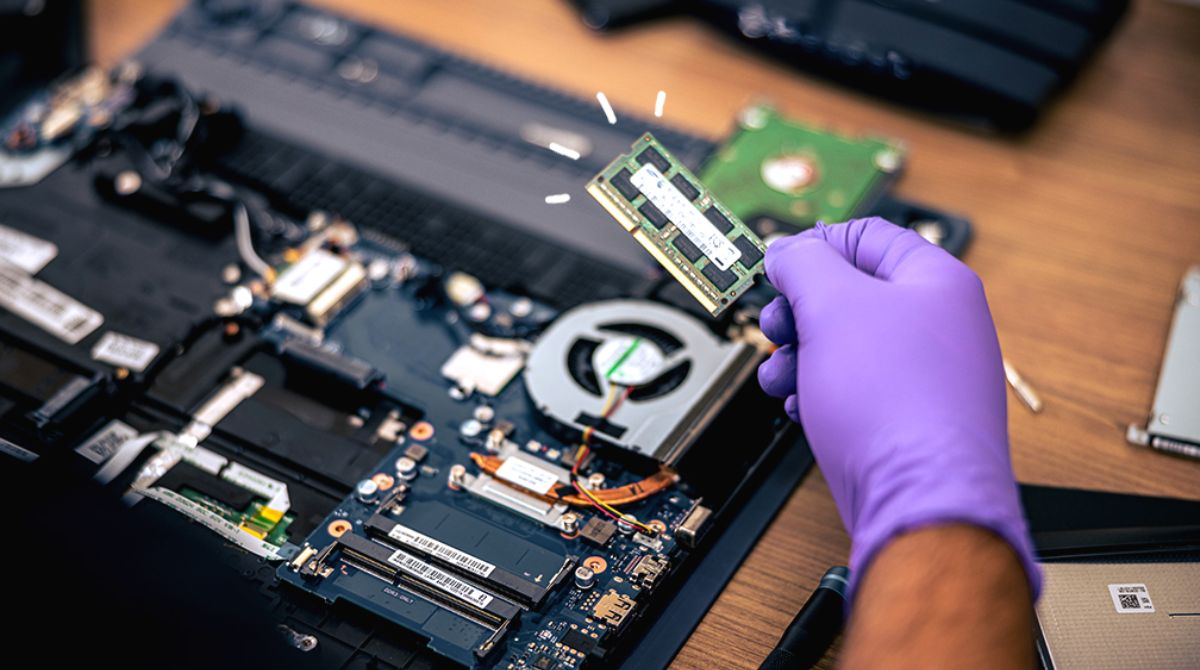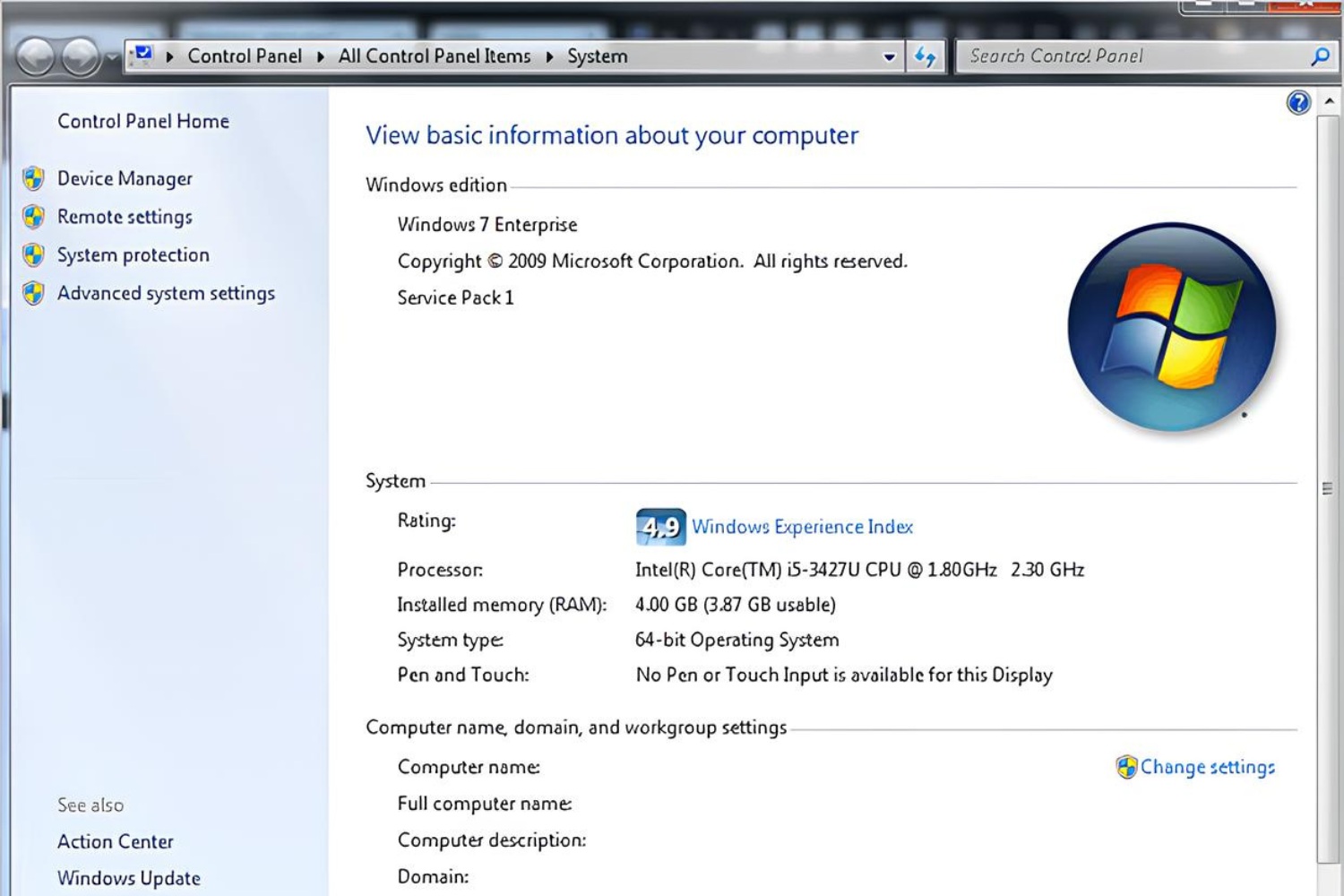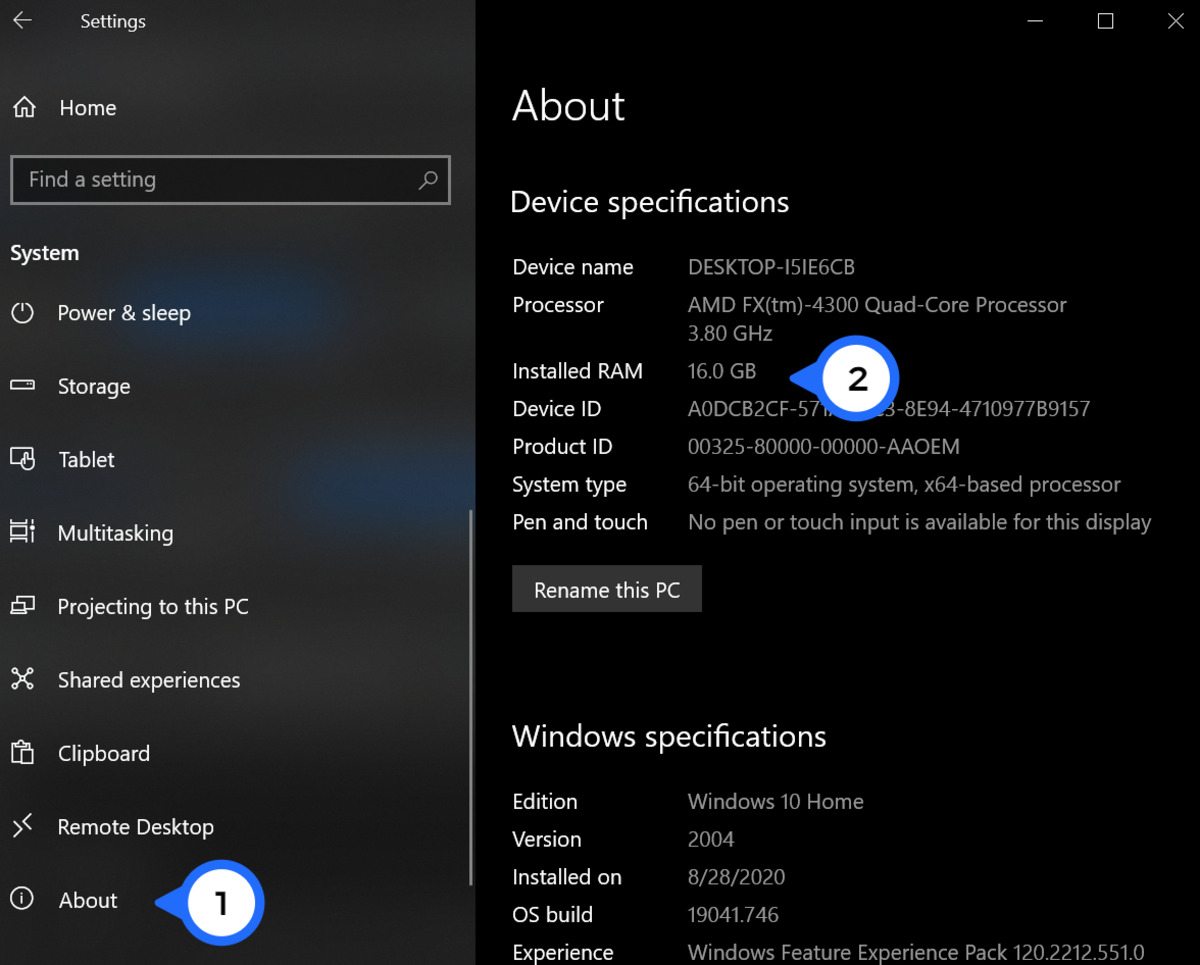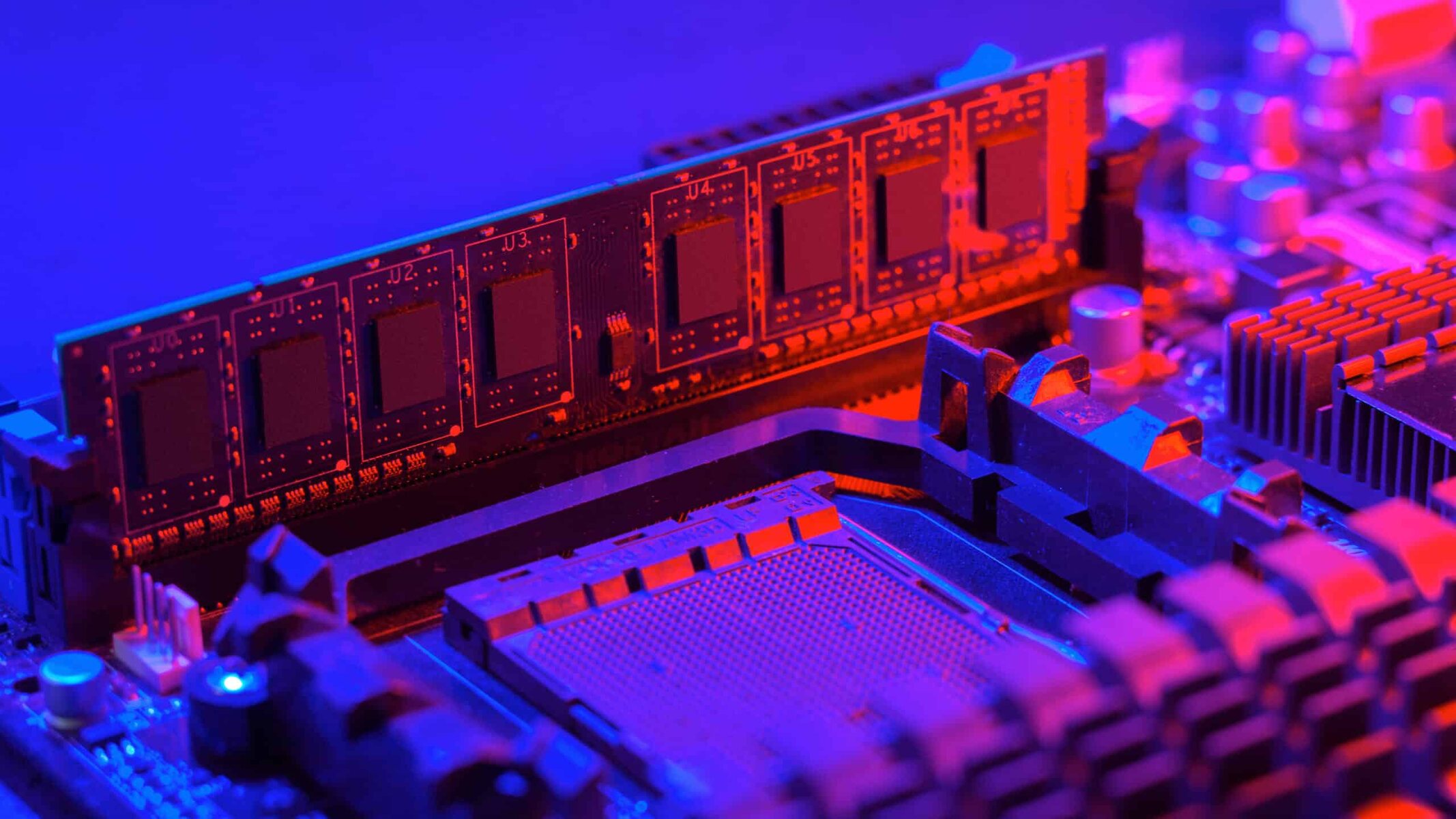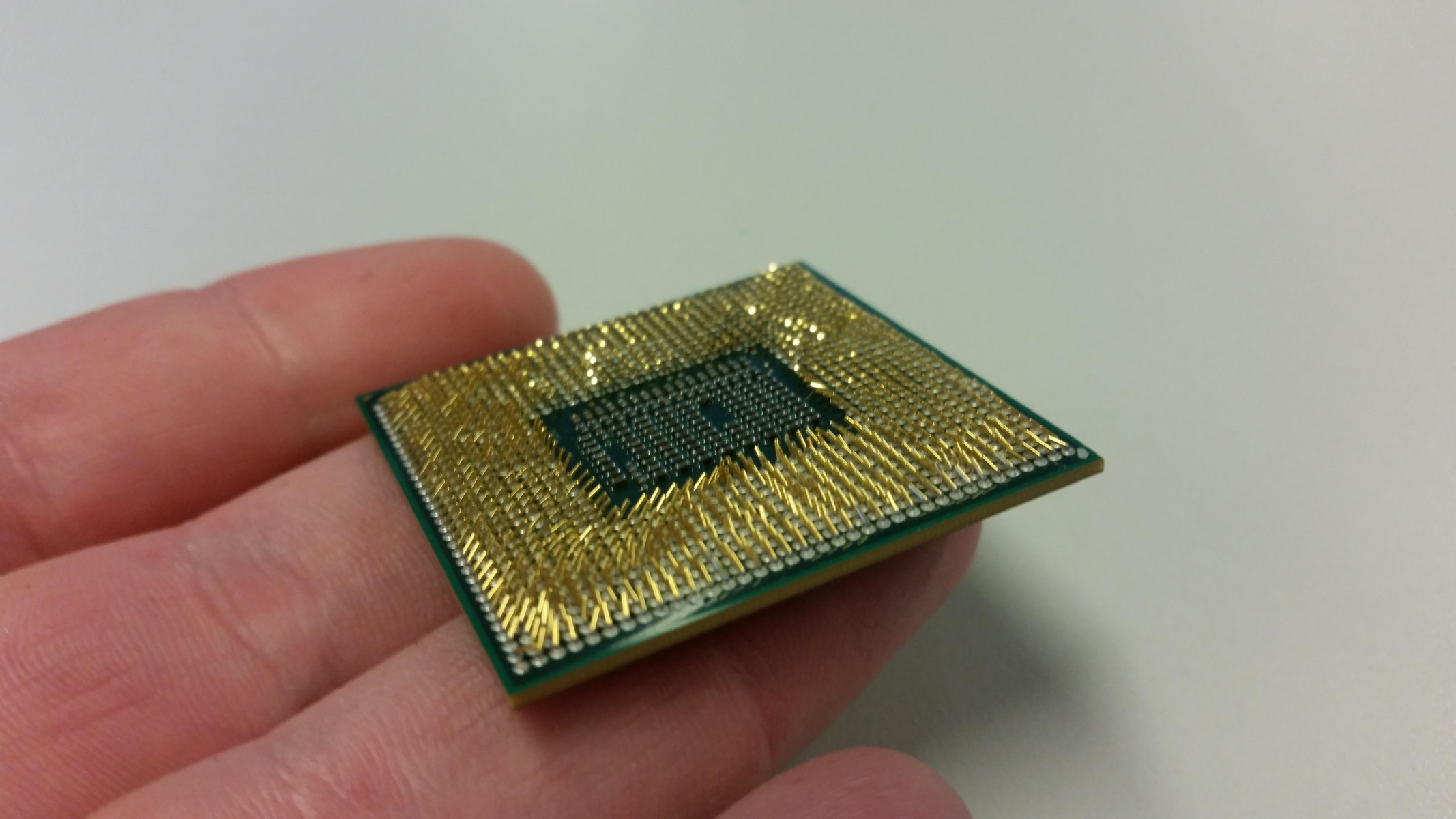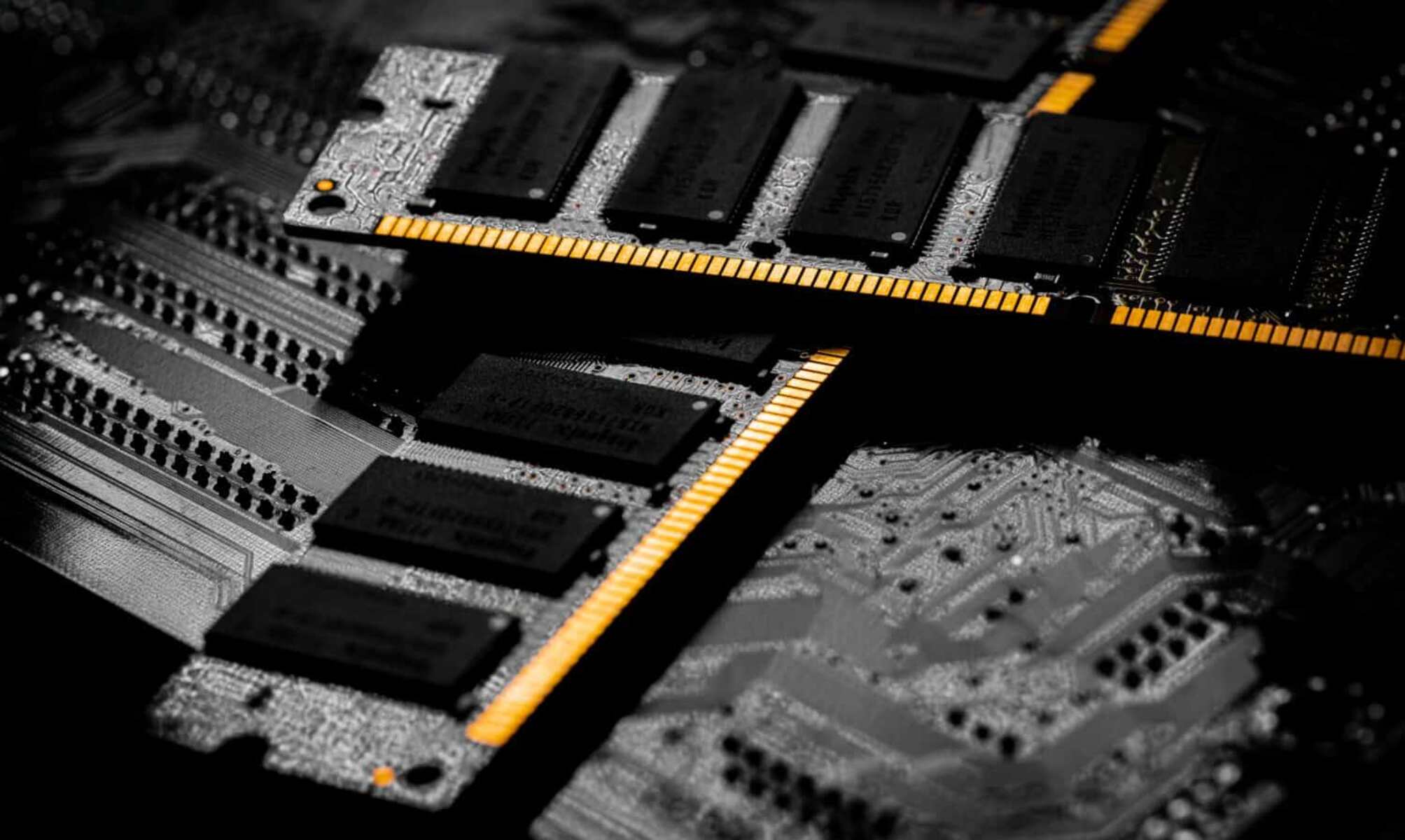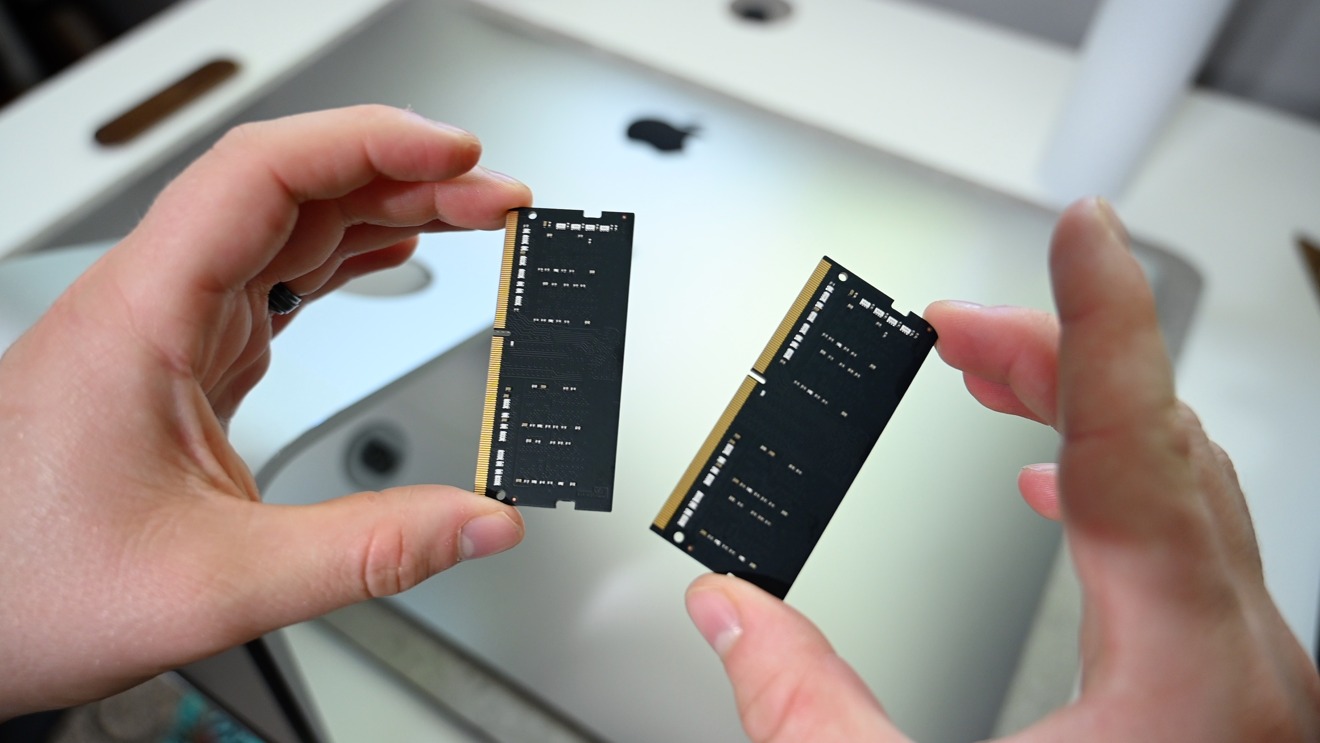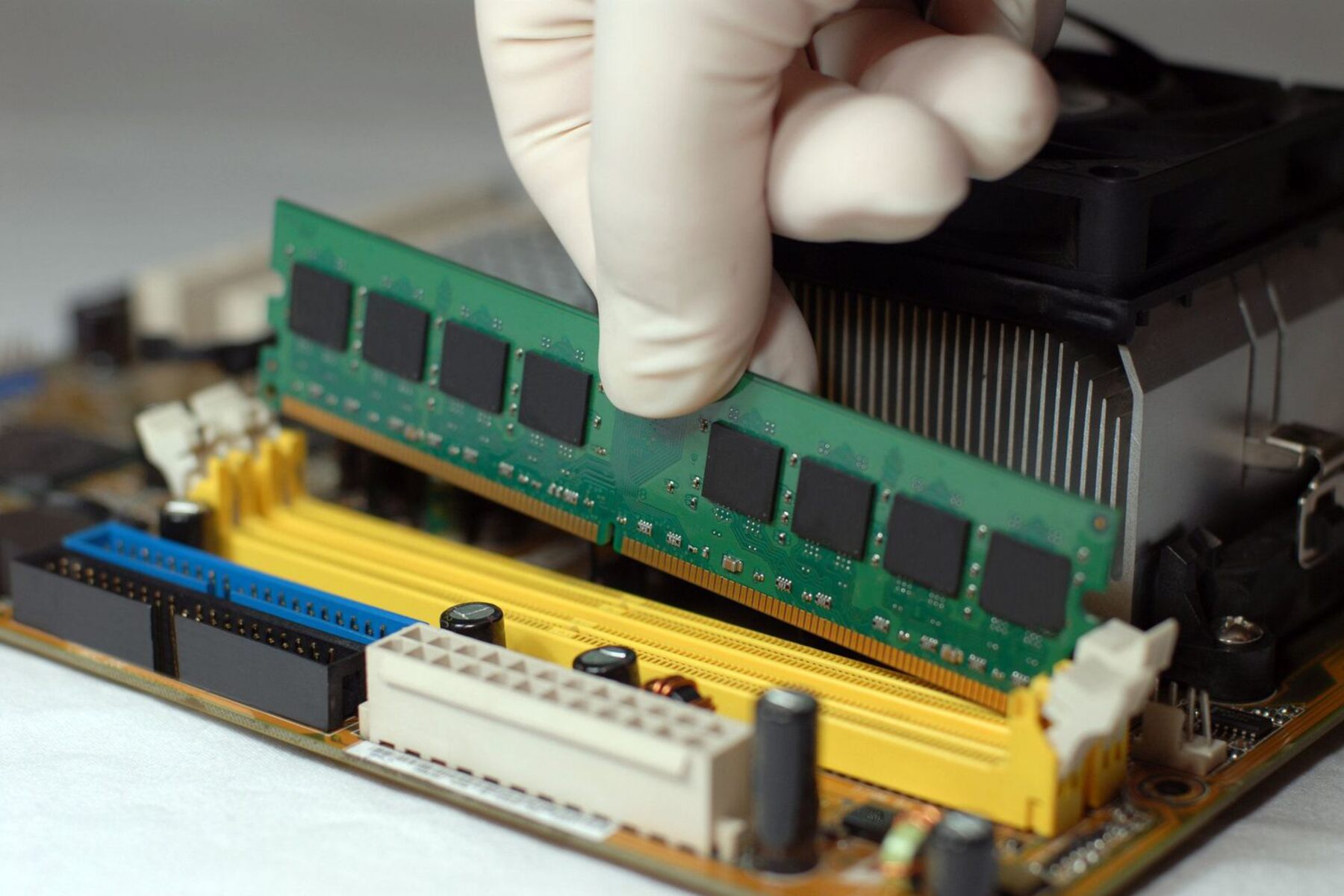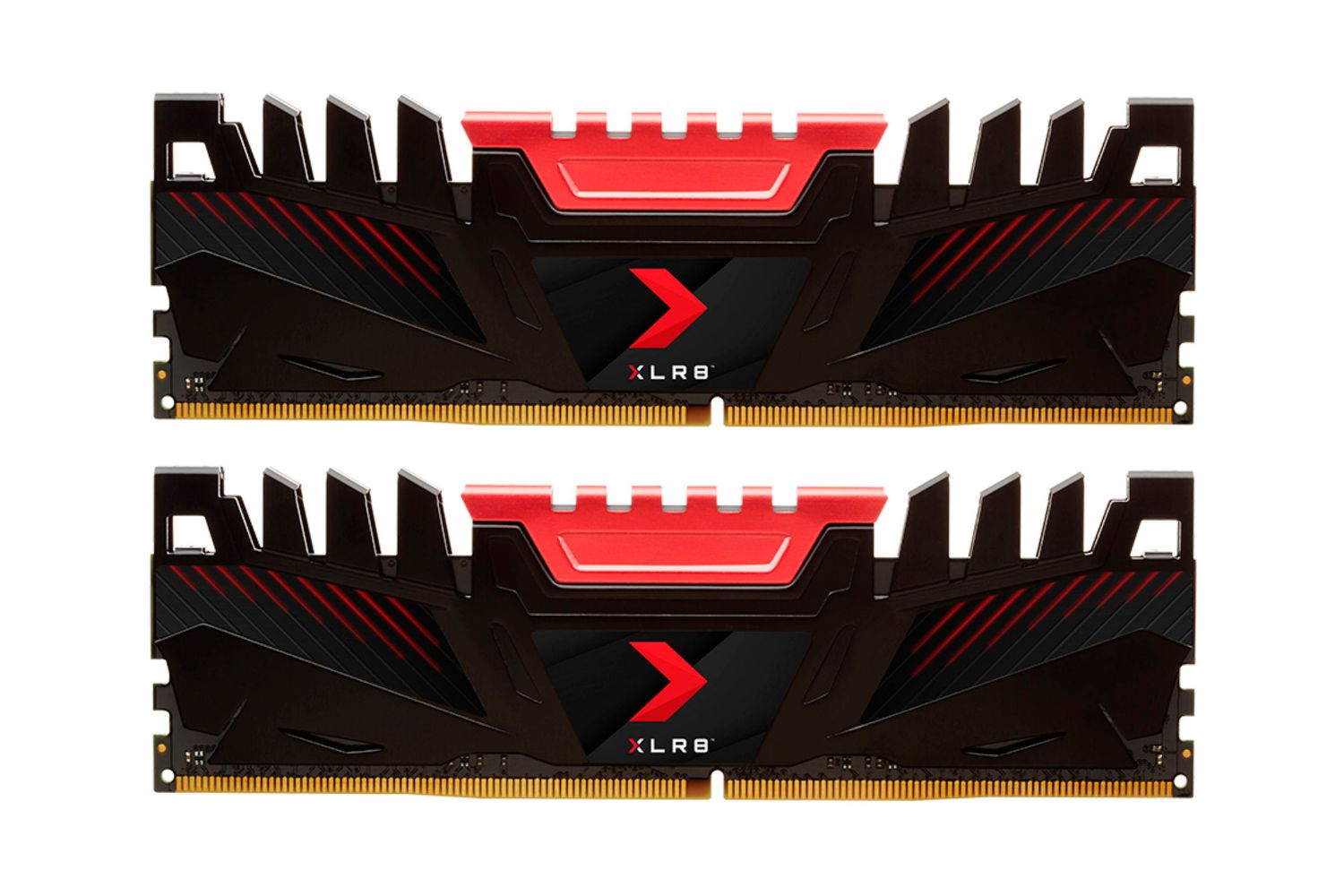Types of RAM
RAM (Random Access Memory) is a crucial component in any computing device as it allows for the temporary storage and quick access of data by the processor. There are several types of RAM available, each with its own characteristics and capabilities. In this article, we will explore some of the most common types of RAM found in modern computers.
1. DDR RAM:
DDR (Double Data Rate) RAM is one of the most widely used types of RAM in today’s computers. It is available in different generations, including DDR, DDR2, DDR3, DDR4, and the latest DDR5. Each generation offers improved speed and efficiency compared to its predecessor.
2. SDRAM:
SDRAM (Synchronous Dynamic Random Access Memory) is another popular type of RAM. It operates at a synchronized speed with the system bus, allowing for faster data transfer between the RAM and the processor.
3. RDRAM:
RDRAM (Rambus Dynamic Random Access Memory) was a type of RAM that gained popularity in the late 1990s. It offered high-speed data transfer rates but was eventually replaced by DDR RAM due to its higher cost.
4. DIMM:
DIMM (Dual In-Line Memory Module) is a form factor used for RAM modules that are commonly found in desktop computers. DIMMs provide a higher memory capacity and faster data transfer rates compared to older SIMM (Single In-Line Memory Module) modules.
5. SODIMM:
SODIMM (Small Outline Dual In-Line Memory Module) is a smaller form factor of DIMM that is typically used in laptops and small form factor computers. SODIMMs offer comparable performance to DIMMs but in a smaller physical size.
6. ECC RAM:
ECC (Error Correcting Code) RAM is a type of RAM that includes additional circuitry to detect and correct single-bit memory errors. ECC RAM is commonly used in servers and workstations where data integrity is crucial.
7. Unbuffered RAM:
Unbuffered RAM, also known as UDIMM (Unbuffered Dual In-Line Memory Module), is the most common type of RAM found in home computers and consumer-grade devices. It offers lower latency and is more affordable compared to buffered RAM.
8. Registered RAM:
Registered RAM, also known as RDIMM (Registered Dual In-Line Memory Module), includes a register between the RAM modules and the memory controller. This register helps reduce electrical loading and improves stability, making it ideal for servers and high-performance computing.
9. Buffered RAM:
Buffered RAM, also known as LRDIMM (Load-Reduced Dual In-Line Memory Module), improves upon the concept of registered RAM by using additional buffering to reduce electrical loading even further. Buffered RAM is commonly used in servers and data centers to maximize memory capacity and performance.
10. Non-ECC RAM:
Non-ECC (Non-Error Correcting Code) RAM is the opposite of ECC RAM and does not contain error detection and correction capabilities. It is less expensive and is commonly found in consumer-grade devices where data integrity is not as critical.
11. Dual-channel RAM:
Dual-channel RAM refers to installing matching pairs of RAM modules on a motherboard to increase memory bandwidth and improve performance. This is achieved by having two independent memory channels for data transfer.
Each type of RAM has its own advantages and is suitable for different purposes. When choosing RAM for your computer or device, it is essential to consider factors like compatibility, capacity, speed, and budget. By understanding the different types of RAM available, you can make an informed decision and ensure optimal performance for your computing needs.
DDR RAM
DDR (Double Data Rate) RAM is one of the most commonly used types of RAM in modern computers. It has undergone several generations of development, including DDR, DDR2, DDR3, DDR4, and the latest DDR5. Each generation offers improvements in speed, efficiency, and capacity compared to the previous one.
DDR RAM utilizes a double pumping mechanism, allowing it to transfer data on both the rising and falling edges of the clock signal, effectively doubling the data transfer rate. This increased speed enables faster access to data, resulting in improved system performance.
DDR RAM modules have a varying number of pins depending on the generation, with DDR5 being the latest with the highest pin count. These pins are used to connect the RAM module to the motherboard, facilitating the transfer of data and power.
Upgrading to a higher generation of DDR RAM can provide significant performance gains. For example, upgrading from DDR3 to DDR4 RAM can result in faster data transfer speeds, reduced power consumption, and increased memory capacity. However, it’s important to ensure compatibility with your motherboard, as each generation of DDR RAM requires a specific type of memory slot.
DDR RAM is widely available and can be found in various capacities, ranging from a few gigabytes to several terabytes in high-end server systems. The capacity is determined by the number of memory banks and the density of memory modules on the RAM stick.
DDR RAM also supports different clock speeds, denoted by the MHz rating. Higher clock speeds generally result in better performance, but it’s essential to ensure compatibility with the motherboard and CPU. It is recommended to match the clock speed of the RAM with the capabilities of the motherboard or CPU to achieve optimal performance.
In summary, DDR RAM is a widely used and versatile type of RAM that offers improved speed, efficiency, and capacity with each new generation. When upgrading or building a computer, it is crucial to consider the compatibility of the DDR RAM with the motherboard and CPU, as well as the desired capacity and clock speed. With the right DDR RAM configuration, you can enhance your system’s performance and ensure smoother multitasking and faster data access.
DDR2 RAM
DDR2 (Double Data Rate 2) RAM is an older generation of DDR RAM that is still found in some older computer systems. It is the successor to DDR RAM and offers several improvements in terms of speed, efficiency, and capacity.
DDR2 RAM operates at higher clock frequencies than its predecessor, allowing for faster data transfer rates. This increased speed enhances overall system performance and improves multitasking capabilities. Additionally, DDR2 RAM modules have a higher bus speed and wider bandwidth, enabling them to handle more data at once.
One notable feature of DDR2 RAM is its lower power consumption compared to DDR RAM. This is achieved by reducing the voltage required for operation. The lower voltage not only reduces power consumption but also produces less heat, contributing to a more energy-efficient and cooler-running system.
DDR2 RAM modules have a different number of pins compared to DDR RAM modules. They feature 240 pins, which allow for a tighter connection to the motherboard, ensuring reliable data transfer and stable performance.
However, it’s important to note that DDR2 RAM is not compatible with DDR or DDR3 memory slots. Mixing different generations of RAM can lead to compatibility issues and system instability. Therefore, it is crucial to check the specifications of your motherboard to ensure compatibility before upgrading or installing DDR2 RAM.
In terms of capacity, DDR2 RAM modules are available in various sizes, ranging from a few hundred megabytes to a few gigabytes per module. The capacity is determined by the number of memory chips on the module and can be increased by installing multiple modules on the motherboard.
Although DDR2 RAM is not as widely used as newer generations, it can still be a viable option for older computer systems. It offers a balance between performance and affordability, making it suitable for tasks that don’t require the latest and most demanding applications.
In summary, DDR2 RAM is an older generation of DDR RAM that offers improved speed, efficiency, and capacity compared to DDR RAM. It operates at higher clock frequencies, consumes less power, and has a wider bandwidth. However, compatibility with motherboard memory slots is essential, and it is advisable to check the specifications of your system before upgrading or installing DDR2 RAM.
DDR3 RAM
DDR3 (Double Data Rate 3) RAM is a widely used and popular type of memory for computer systems. It is the successor to DDR2 RAM and offers several improvements in terms of speed, capacity, and energy efficiency.
DDR3 RAM operates at higher clock speeds compared to DDR2 RAM, resulting in faster data transfer rates. This improved speed allows for quicker access to data and better overall system performance, making it ideal for tasks that require substantial memory bandwidth, such as gaming or multimedia editing.
One of the key advancements of DDR3 RAM is its increased memory capacity. DDR3 RAM modules can support greater memory density, allowing for larger capacity configurations. This is especially beneficial for users who require a significant amount of memory for demanding applications such as video editing, 3D rendering, or virtualization.
In terms of energy efficiency, DDR3 RAM is designed to operate at a lower voltage compared to its predecessors. This not only reduces power consumption but also results in lower heat generation, contributing to a more efficient and cooler-running system.
DDR3 RAM modules have 240 pins, similar to DDR2 RAM, ensuring compatibility with motherboards that support DDR3 memory slots. However, it’s important to note that DDR3 RAM is not compatible with DDR2 or DDR4 memory slots, so it’s crucial to verify the compatibility of your motherboard before upgrading or installing DDR3 RAM.
DDR3 RAM modules are available in various capacities, ranging from a few gigabytes to multiple terabytes in high-end server configurations. The capacity is determined by the number of memory chips on the module and the overall density of the memory module.
It’s worth mentioning that DDR3 RAM has been largely superseded by DDR4 RAM in newer computer systems. DDR4 RAM offers even higher speeds, better energy efficiency, and increased memory capacities. However, DDR3 RAM continues to be widely used in older systems or budget-friendly setups where the performance demands may not be as high.
In summary, DDR3 RAM is a popular type of memory that offers improved speed, increased capacity, and energy efficiency compared to DDR2 RAM. It provides faster data transfer rates, larger memory configurations, and lower power consumption. When considering DDR3 RAM, it’s important to ensure compatibility with your motherboard and consider the specific requirements of your computing needs.
DDR4 RAM
DDR4 (Double Data Rate 4) RAM is the fourth generation of DDR RAM and is currently the most widely used type of memory in modern computer systems. It offers significant improvements in speed, capacity, and energy efficiency compared to its predecessors.
One of the key advancements of DDR4 RAM is its higher data transfer rates. DDR4 RAM operates at higher clock speeds compared to DDR3 RAM, resulting in faster access to data and improved overall system performance. This increased speed is particularly beneficial for memory-intensive tasks such as gaming, multimedia editing, and data processing.
DDR4 RAM also offers higher memory density, allowing for larger capacity configurations. With increased memory density, it is possible to achieve higher overall RAM capacities, which is essential for memory-intensive applications such as virtualization or running multiple resource-demanding programs simultaneously.
Energy efficiency is another notable feature of DDR4 RAM. It is designed to operate at a lower voltage compared to DDR3 RAM, resulting in reduced power consumption. The lower voltage also contributes to lower heat generation, which improves the overall efficiency and longevity of the system.
DDR4 RAM modules utilize 288 pins, which is an increase compared to the 240 pins used in DDR3 RAM. This change in pin configuration ensures compatibility with motherboards that support DDR4 memory slots. However, it’s important to note that DDR4 RAM is not compatible with DDR3 or DDR5 memory slots, so it’s crucial to verify the compatibility of your motherboard before upgrading or installing DDR4 RAM.
DDR4 RAM modules are available in various capacities, ranging from a few gigabytes to several terabytes in high-end server systems. The capacity is determined by the number of memory chips on the module and the overall density of the memory module.
DDR4 RAM has become the standard in modern computer systems due to its higher performance, increased memory density, and improved energy efficiency compared to DDR3 RAM. However, it’s important to consider the compatibility of your motherboard and the specific requirements of your computing needs before opting for DDR4 RAM.
It’s worth noting that DDR5 RAM has been released as the latest generation of DDR RAM. DDR5 RAM offers further improvements in speed, capacity, and overall performance compared to DDR4 RAM. However, DDR4 RAM continues to be widely used and provides a reliable memory solution for a wide range of computing needs.
DDR5 RAM
DDR5 (Double Data Rate 5) RAM is the latest and most advanced generation of DDR RAM. It represents a significant leap in performance, capacity, and efficiency compared to its predecessors, DDR4 RAM.
One of the key advancements of DDR5 RAM is its increased data transfer rates. DDR5 RAM operates at higher clock speeds, enabling faster access to data and improved overall system performance. It offers double the data rate per clock cycle compared to DDR4 RAM, resulting in significantly higher bandwidth and faster multitasking capabilities.
DDR5 RAM also introduces an increased memory density, allowing for larger memory configurations. With DDR5 RAM, it is possible to achieve higher overall system memory capacities, making it ideal for demanding applications such as artificial intelligence, machine learning, and high-performance computing.
Energy efficiency is another significant improvement in DDR5 RAM. It utilizes a lower voltage compared to DDR4 RAM, resulting in reduced power consumption and improved power efficiency. This not only contributes to energy savings but also helps in reducing heat generation, contributing to a cooler and more stable system.
DDR5 RAM also introduces new features that enhance reliability and error correction capabilities. It includes improved error correction code (ECC) algorithms and an enhanced on-die error correction mechanism, ensuring the integrity and accuracy of data stored in memory.
DDR5 RAM modules feature an increased number of pins compared to DDR4 RAM, with 288 pins being the standard. This change in pin configuration ensures compatibility with motherboards that support DDR5 memory slots. However, it’s important to note that DDR5 RAM is not compatible with DDR4 or DDR3 memory slots, so it’s crucial to verify the compatibility of your motherboard before upgrading or installing DDR5 RAM.
As the latest generation of DDR RAM, DDR5 RAM offers unparalleled performance and capabilities. However, it’s important to note that DDR5 RAM is still relatively new and may have limited availability and higher costs compared to DDR4 RAM. It is primarily recommended for users who require the highest levels of performance for cutting-edge applications.
In summary, DDR5 RAM is the most advanced and powerful generation of DDR RAM. It offers faster data transfer rates, higher memory capacities, improved energy efficiency, and enhanced reliability features. While DDR5 RAM represents the future of memory technology, it’s important to consider compatibility, availability, and pricing factors before choosing DDR5 RAM for your system.
SDRAM
SDRAM (Synchronous Dynamic Random Access Memory) is a type of RAM that has been widely used in computer systems since the late 1990s. It is known for its synchronous operation, which means that it synchronizes its data transfers with the system bus clock speed, resulting in more efficient and faster memory access.
SDRAM operates at a higher clock speed than its predecessor, FPM (Fast Page Mode) RAM, allowing for faster data transfer rates. This improved speed enhances the overall performance of the system, enabling quicker access to data and smoother multitasking capabilities.
One of the distinguishing features of SDRAM is its ability to read and write data in bursts. Burst mode allows SDRAM to access multiple memory locations in a sequence without the need for repetitive memory address signals. This significantly improves efficiency and reduces the latency associated with accessing data in sequential locations.
SDRAM modules come in various formats, including DIMMs (Dual In-Line Memory Modules) for desktop computers and SODIMMs (Small Outline Dual In-Line Memory Modules) for laptops and smaller devices. These modules are designed to be easily installed on the motherboard and can offer varying degrees of memory capacity depending on the specific module configuration.
SDRAM has undergone multiple generations of development, including DDR, DDR2, DDR3, and DDR4 SDRAM. These subsequent generations have witnessed significant improvements in terms of speed, capacity, and efficiency, with each new iteration building upon the strengths of its predecessor.
While DDR RAM has largely replaced SDRAM in modern computers, SDRAM remains prevalent in certain applications and older systems. It is often found in legacy devices, industrial systems, and embedded systems that do not require the high performance or advanced features of DDR RAM.
It’s important to note that SDRAM is not backward compatible with DDR RAM or its subsequent generations. The memory slots on the motherboard are designed to accommodate a specific type of RAM, so it’s essential to verify the compatibility of your system before upgrading or installing SDRAM.
In summary, SDRAM is a type of RAM that offers synchronous operation and burst mode access, resulting in faster data transfer rates and improved performance compared to its predecessors. While DDR RAM has largely replaced SDRAM in modern systems, SDRAM continues to be utilized in specific applications and legacy devices where its capabilities are sufficient.
RDRAM
RDRAM (Rambus Dynamic Random Access Memory) is a type of RAM that was introduced in the late 1990s as an alternative to SDRAM. It was developed by Rambus Inc. and gained popularity for its high-speed data transfer capabilities.
One of the key features of RDRAM is its high clock speed, which allows for extremely fast data transfer rates. It was designed to provide superior performance compared to other memory technologies at that time, such as SDRAM and DDR RAM. RDRAM achieved this by using a unique parallel architecture that enabled it to transfer data on both the rising and falling edges of the clock signal.
RDRAM modules, also known as RIMMs (Rambus Inline Memory Modules), have a distinctive form factor and layout compared to other types of RAM. They feature a row of connectors on both sides of the module, which helps facilitate the high-speed communication between the memory module and the memory controller.
Despite its initially promising performance, RDRAM faced some challenges that limited its widespread adoption. One of the main limitations was its higher cost compared to alternative memory technologies, making it less appealing for mainstream consumers. Additionally, the RDRAM technology required a specific chipset and motherboard design to support its unique architecture.
Furthermore, the development and release of DDR RAM, which provided comparable performance at a lower cost, overshadowed RDRAM in the market. DDR RAM quickly gained popularity and became the preferred choice for most computer systems due to its wider compatibility and lower price point.
As a result, RDRAM gradually lost its popularity and faded into obsolescence. It is now mostly found in older systems and specific niche applications that have hardware requirements specifically tailored for RDRAM technology.
Although RDRAM faced challenges in the market, it showcased the potential for high-speed memory technologies. Its influence can be seen in subsequent developments in memory technology, such as the continued emphasis on faster data transfer rates and higher memory bandwidth in modern DDR RAM standards.
In summary, RDRAM is a type of RAM that offered high-speed data transfer rates and superior performance compared to contemporary memory technologies at the time of its release. However, due to higher costs, limited compatibility, and the emergence of DDR RAM, RDRAM did not gain widespread adoption and became overshadowed by more cost-effective alternatives.
DIMM
DIMM (Dual In-Line Memory Module) is a widely used form factor for RAM modules in desktop computers and servers. It provides a convenient and standardized way to install and upgrade memory modules in these systems.
DIMMs are rectangular modules with multiple pins on both sides that connect directly to the memory slots on the motherboard. They are designed to be inserted vertically into the memory slots, providing a secure and reliable connection. DIMMs are available in various sizes and capacities, allowing for flexible memory configurations based on the specific requirements of the system.
DIMMs offer several advantages over older memory module formats. Unlike the single-sided SIMMs (Single In-Line Memory Modules) used in older systems, DIMMs have pins on both sides, increasing the number of connection points and improving data transfer rates. This allows for faster communication between the RAM module and the memory controller, resulting in improved system performance.
DIMMs also support a wider memory bus compared to older memory module formats. This means that more data can be transferred in parallel, leading to increased memory bandwidth and faster data access. Higher memory bandwidth is particularly beneficial for memory-intensive applications, such as gaming, video editing, and data processing.
Another advantage of DIMMs is their scalability. DIMM slots on the motherboard can accommodate multiple modules, allowing for easy expansion and upgrading of system memory. This flexibility enables users to increase the memory capacity of their systems as needed, without having to replace the entire memory module.
It’s worth noting that there are different types of DIMMs, such as DDR, DDR2, DDR3, DDR4, and DDR5 DIMMs. Each type corresponds to a specific generation of DDR RAM, offering varying performance, capacity, and compatibility. It’s important to ensure compatibility between the DIMM type supported by your motherboard and the DDR RAM modules you intend to install.
DIMMs are widely used in desktop computers, workstations, and server systems due to their reliability, compatibility, and ease of use. They have become the standard form factor for memory modules in modern computing, providing a straightforward means of upgrading and expanding system memory.
In summary, DIMM is a form factor widely used for RAM module installation in desktop computers and servers. It offers several advantages, including increased data transfer rates, wider memory buses, scalability, and ease of use. The availability of different DIMM types ensures compatibility with various generations of DDR RAM, providing flexibility for memory upgrades and system enhancements.
SODIMM
SODIMM (Small Outline Dual In-Line Memory Module) is a compact form factor used for RAM modules in laptops, small form factor computers, and other devices with space constraints. SODIMMs offer a smaller physical size compared to standard DIMMs, making them ideal for compact systems without compromising memory capacity or performance.
SODIMMs have a similar construction to DIMMs but feature a smaller number of pins due to their reduced size. While standard DIMMs typically have 288 pins, SODIMMs usually have either 200 or 204 pins, depending on the generation and DDR type. These pins allow for a secure connection to the memory slots on the motherboard, ensuring stable communication between the RAM module and the system.
SODIMMs are available in various DDR types, such as DDR, DDR2, DDR3, DDR4, and DDR5, to match the corresponding memory technologies used in laptops and small form factor devices. This allows for compatibility with different generations of RAM and ensures proper functioning within the specific system requirements.
SODIMMs offer the same advantages as standard DIMMs in terms of improved memory bandwidth, faster data transfer rates, and scalability. Despite their smaller physical size, SODIMMs can have comparable memory capacities to DIMMs, making them suitable for memory-intensive tasks on portable and space-constrained systems.
These compact memory modules are specifically designed to fit the memory slots in laptops, ultrabooks, all-in-one PCs, and mini PCs. They can also be used in certain small form factor desktops and industrial systems. The easy installation and upgrade process of SODIMMs enable users to enhance system performance and multitasking capabilities conveniently and efficiently.
It’s important to note that SODIMMs are not interchangeable with standard DIMMs due to their physical differences. The memory slots on the motherboard of laptops and small form factor devices are specifically designed to support SODIMMs, ensuring compatibility and proper functioning. Attempting to install a standard DIMM into an SODIMM slot, or vice versa, can result in damage to the memory module and the motherboard.
In summary, SODIMMs are a compact form factor of RAM modules commonly used in laptops, small form factor computers, and other space-constrained devices. They provide the same advantages as DIMMs, including improved memory performance and scalability, while maintaining a smaller physical footprint. It’s essential to ensure compatibility between the SODIMM type supported by the motherboard and the DDR RAM modules to achieve optimal performance and stability in portable and compact systems.
ECC RAM
ECC (Error Correcting Code) RAM, also known as ECC memory, is a type of RAM that includes additional circuitry to detect and correct single-bit memory errors. It is widely used in servers, workstations, and other mission-critical systems where data integrity is of utmost importance.
ECC RAM works by adding extra bits to each memory word, enabling the detection and correction of memory errors. When data is stored or read from an ECC RAM module, these extra bits are used to verify the accuracy of the stored data. If a single-bit error is detected, the ECC circuitry can automatically correct the error, ensuring the data remains accurate and reliable.
By automatically detecting and correcting errors, ECC RAM helps prevent data corruption and system instability, making it essential for applications where accuracy is critical. This is particularly important in enterprise environments, such as financial institutions, healthcare systems, and scientific research facilities, where data integrity and reliability are paramount.
ECC RAM modules have similar physical characteristics to standard DIMMs or SODIMMs, depending on the system they are designed for. However, ECC RAM typically requires a motherboard and memory controller that explicitly support ECC functionality. It is important to ensure that the system you intend to use ECC RAM in is compatible and capable of utilizing its error-correcting capabilities.
It’s worth noting that ECC RAM typically incurs a slight performance overhead compared to non-ECC RAM due to the additional error correction processes. However, the added reliability and data integrity provided by ECC RAM far outweigh this minor performance impact in critical computing environments. For most applications, the benefits of ECC RAM significantly outweigh the marginal reduction in performance.
It is important to consider that ECC RAM is often more expensive than non-ECC RAM due to the additional circuitry and features it includes. This cost premium reflects the enhanced error correction capabilities and higher quality assurance associated with ECC RAM modules.
In summary, ECC RAM is a specialized type of RAM that includes error-correcting circuitry to detect and fix single-bit memory errors. It is primarily used in server environments and mission-critical systems where data accuracy and reliability are crucial. While ECC RAM incurs a slight performance impact and is typically more expensive than non-ECC RAM, the added peace of mind and data integrity make it an essential choice for applications where errors cannot be tolerated.
Unbuffered RAM
Unbuffered RAM, also known as unregistered RAM or UDIMM (Unbuffered Dual In-Line Memory Module), is the most common type of RAM used in consumer-grade computers and devices. It is characterized by its simplicity and straightforward design, making it suitable for a wide range of computing needs.
Unlike buffered RAM, unbuffered RAM does not include additional circuitry between the memory module and the memory controller. This means that the memory signals pass directly between the RAM module and the controller, offering minimal delay and latency.
One advantage of unbuffered RAM is its ease of use and compatibility. It is designed to be plug-and-play, allowing for easy installation and straightforward upgrades. Unbuffered RAM modules are typically supported by a wide range of motherboards and do not require any special configuration or additional settings.
Unbuffered RAM is available in various DDR types, including DDR, DDR2, DDR3, DDR4, and DDR5, to match the corresponding memory technologies used in different computer systems. Users can select the appropriate generation of unbuffered RAM based on their system’s requirements and specifications.
It is important to note that unbuffered RAM has limited capacity compared to registered or buffered RAM. This is because the absence of the buffering circuitry allows for lower latencies and faster access times, but at the cost of reduced memory capacity. However, unbuffered RAM still provides sufficient capacity for most consumer-level needs and can handle typical computing tasks with ease.
Unbuffered RAM is popular among gamers, home users, and small businesses looking for reliable and cost-effective memory solutions. It is commonly used in desktop computers, workstations, and high-performance laptops, where versatility and compatibility are essential considerations.
While unbuffered RAM modules provide simplicity and ease of use, they do not offer the same level of error correction capabilities as other types of RAM, such as ECC RAM. Therefore, if data integrity and error correction are critical for your specific application, it is recommended to consider alternative RAM options that provide enhanced error correction functionality.
In summary, unbuffered RAM, or UDIMM, is the most common type of RAM used in consumer-grade computers and devices. It offers simplicity, compatibility, and ease of use, making it suitable for a wide range of computing needs. However, it is important to consider the limitations in terms of memory capacity and error correction capabilities when selecting unbuffered RAM for your system.
Registered RAM
Registered RAM, commonly referred to as registered DIMM (RDIMM), is a type of memory module that includes an additional register between the RAM module and the memory controller. This register, also known as a buffer, helps improve the stability and reliability of the system by reducing electrical loading and signal integrity issues.
The register in registered RAM acts as a middleman between the memory module and the memory controller, allowing for increased capacity and improved performance. The register receives and stores the memory requests from the memory controller before forwarding them to the memory chips on the module. This buffering intermediation helps reduce the electrical load and enables the use of more memory modules in parallel.
Registered RAM is commonly used in server environments, high-end workstations, and other demanding applications that require large memory capacities and high data throughput. It provides advantages in terms of memory scalability, reliability, and system stability.
One of the key benefits of registered RAM is its ability to support higher memory capacities. The use of the register reduces the electrical loading on the memory controller, allowing for a greater number of memory modules to be installed on a single motherboard. This makes registered RAM an ideal choice for applications that require extensive memory configurations, such as virtualization, database servers, and intense data processing.
Registered RAM also helps improve signal integrity by reducing electrical noise and the effects of signal reflections within the system. This results in better overall system stability and the ability to achieve higher memory frequencies without compromising data integrity.
It’s important to note that while registered RAM provides benefits in terms of capacity and stability, it comes with some trade-offs. Compared to unbuffered RAM, registered RAM has slightly higher latency due to the additional buffering process. Additionally, registered RAM modules tend to be slightly more expensive than their unbuffered counterparts.
Registered RAM modules are available in various DDR types, such as DDR2, DDR3, DDR4, and DDR5, aligning with the respective generations of DDR RAM technology. It is crucial to ensure compatibility between the registered RAM modules, the motherboard, and the memory controller to achieve optimal performance.
In summary, registered RAM, or RDIMM, is a type of memory module that includes a register or buffer between the memory controller and the memory chips. It offers benefits such as higher memory capacities, improved signal integrity, and enhanced system stability. Registered RAM is commonly used in server environments and applications that require extensive memory configurations and reliable performance.
Non-ECC RAM
Non-ECC (Non-Error Correcting Code) RAM, also known as non-ECC memory, is a type of RAM that lacks the error detection and correction capabilities present in ECC RAM. Unlike ECC RAM, which includes additional circuitry for error correction, non-ECC RAM prioritizes cost-effectiveness and is commonly used in consumer-grade computers and devices.
Non-ECC RAM operates without the error correction algorithms found in ECC RAM. This means that if a single-bit memory error occurs during read or write operations, it is not detected or corrected in non-ECC RAM modules. As a result, non-ECC RAM is generally considered to have a slightly higher risk of data corruption compared to ECC RAM.
Non-ECC RAM is most commonly used in desktop computers, gaming systems, and personal laptops where the cost and performance are key factors. For these applications, the occasional and rare occurrence of memory errors is deemed acceptable, as the focus is typically on affordability and high-performance gaming or general computing tasks.
One significant advantage of non-ECC RAM is its lower cost compared to ECC RAM. The absence of the error correction circuitry and additional components reduces manufacturing costs, making non-ECC RAM a more budget-friendly option for users.
Non-ECC RAM is available in various generations of DDR technology, including DDR, DDR2, DDR3, DDR4, and DDR5. Users can select the appropriate generation based on their system requirements and specifications.
It’s essential to consider the compatibility between non-ECC RAM and the specific memory slots and system requirements of the motherboard. Non-ECC RAM is not interchangeable with ECC RAM and cannot be used in systems designed specifically for ECC memory. It is crucial to verify the compatibility of the motherboard and the memory modules to ensure a stable and functional system.
While non-ECC RAM lacks the error correction capabilities of ECC RAM, it is suitable for most consumer-level computing needs. For gaming, web browsing, multimedia consumption, and general productivity tasks, non-ECC RAM provides adequate performance and affordability.
In summary, non-ECC RAM is a type of memory module that lacks error correction capabilities. It is commonly used in consumer-grade computers, gaming systems, and personal laptops where the focus is on cost-effectiveness and high-performance computing. Non-ECC RAM offers a more budget-friendly option compared to ECC RAM, albeit with a slightly higher risk of occasional memory errors. Compatibility with the memory slots and system requirements of the motherboard should be ensured before installing non-ECC RAM.
Buffered RAM
Buffered RAM, also known as registered RAM or RDIMM (Registered Dual In-Line Memory Module), is a type of memory module that incorporates additional buffering circuitry between the RAM module and the memory controller. This buffering mechanism enhances the stability and performance of the system, especially in scenarios that require large memory capacities and high data throughput.
Buffered RAM operates by using a register, or buffer, to receive and store memory requests from the memory controller before forwarding them to the memory chips on the module. This buffering process reduces the electrical loading on the memory controller, allowing for greater memory module density and improved signal integrity.
One of the primary benefits of buffered RAM is its ability to support larger memory capacities compared to unbuffered RAM. The buffering mechanism reduces the electrical load on the memory controller, enabling a more significant number of memory modules to be installed on a single motherboard. This makes buffered RAM ideal for memory-intensive applications, such as virtualization, large-scale databases, and high-performance computing.
Another advantage of buffered RAM is its ability to improve overall system stability. The buffering circuitry helps reduce electrical noise and signal reflections, enhancing signal integrity and minimizing the potential for data corruption. This makes buffered RAM a preferred choice for applications that demand utmost reliability and accuracy.
Buffered RAM modules are typically available in various DDR types, including DDR2, DDR3, DDR4, and DDR5, corresponding to the respective generations of DDR RAM technology. When using buffered RAM, it is essential to ensure compatibility between the memory modules, the motherboard, and the memory controller to guarantee optimal performance.
It’s important to note that buffered RAM incurs a slight increase in latency compared to unbuffered RAM due to the additional buffering process. The slight increase in latency is typically overshadowed by the benefits of increased memory capacity and enhanced signal integrity offered by buffered RAM modules.
Buffered RAM is commonly used in server environments, high-performance workstations, and other applications that necessitate extensive memory configurations and reliable performance. It is particularly valuable for scenarios that prioritize stability, reliability, and large-scale data processing.
It’s worth noting that buffered RAM is relatively more expensive than unbuffered RAM due to the additional circuitry and features it includes. This cost premium reflects the enhanced memory capacity, signal integrity, and reliability associated with buffered RAM modules.
In summary, buffered RAM, also known as registered RAM or RDIMM, incorporates buffering circuitry to improve memory capacity and signal integrity. It is commonly used in server environments and applications that require extensive memory configurations and enhanced data reliability. Buffered RAM offers a balance between increased memory capacity and system stability, making it an ideal choice for memory-intensive and critical computing needs.
Dual-channel RAM
Dual-channel RAM is a memory configuration technique that allows for increased memory bandwidth and improved overall system performance. It involves utilizing two identical RAM modules in parallel, effectively doubling the data transfer rate between the memory and the memory controller.
In a dual-channel configuration, the memory controller in the computer’s chipset accesses and writes data simultaneously to two memory modules. This parallel data transfer enables higher memory bandwidth, reducing data bottlenecks and accelerating system responsiveness.
Dual-channel RAM provides several benefits, including faster data access, improved multitasking capabilities, and smoother overall system performance. By dividing the data load between the two memory modules, dual-channel RAM enhances the system’s ability to handle multiple tasks simultaneously, such as running demanding applications or intensive gaming.
In order to take advantage of dual-channel RAM, it is necessary to install identical RAM modules in the appropriate memory slots on the motherboard. Most motherboards designate specific slots for dual-channel operation, which are usually color-coded or labeled. It is important to consult the motherboard manual to ensure proper installation.
While dual-channel RAM can enhance system performance, it is important to note that it is not a substitute for having sufficient memory capacity. Adding more RAM modules will increase the total memory capacity, but it will not transform it into a dual-channel configuration. It is important to balance memory capacity and dual-channel configuration based on the specific needs of the system.
Dual-channel RAM is compatible with various types of RAM, including DDR, DDR2, DDR3, DDR4, and DDR5. It is crucial to ensure that the RAM modules are of the same type, speed, and capacity for optimal compatibility and performance.
It’s important to note that not all applications and use cases benefit equally from dual-channel RAM. Applications that rely heavily on memory bandwidth, such as video editing software or memory-intense games, will see the most significant performance improvements. Less memory-intensive tasks may not see as substantial of a boost in performance.
In summary, dual-channel RAM is a memory configuration technique that involves installing two identical RAM modules in parallel to increase memory bandwidth and system performance. It improves data transfer rates, multitasking capabilities, and overall system responsiveness. Dual-channel RAM is compatible with various types of RAM and is particularly beneficial for memory-intensive tasks and applications.







